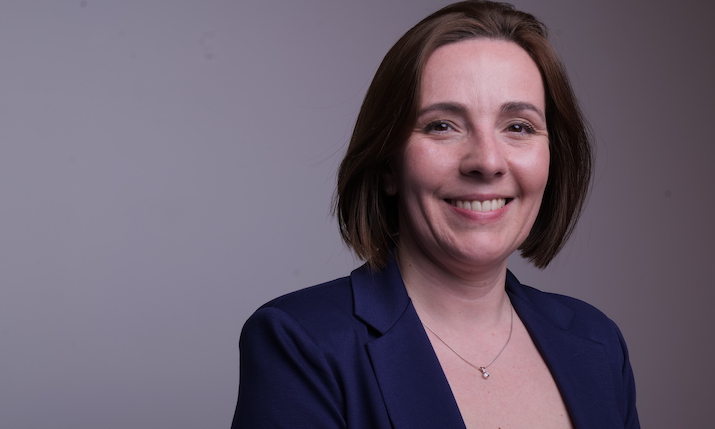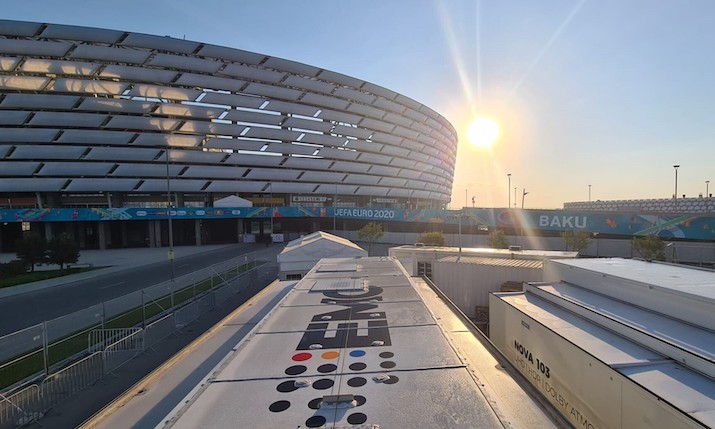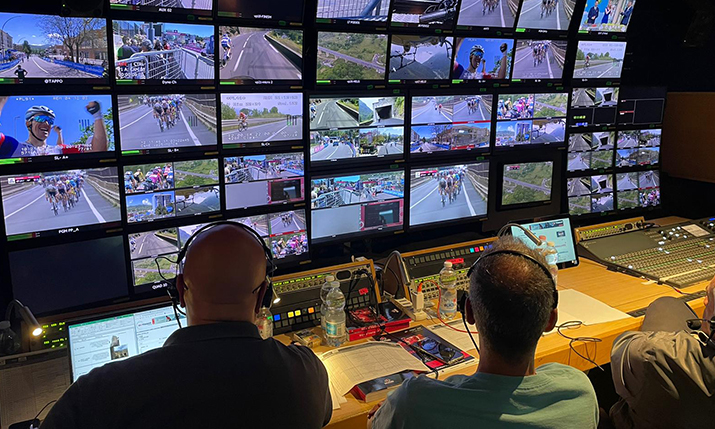Tech Insight: EMG’s Lucy O’Brien on navigating change and developing the next generation of broadcast engineers

EMG CTO Lucy O’Brien found her calling as a broadcast engineer at a young age in the middle of a muddy field. “I am unique in that I decided when I was 14 that I wanted to be a broadcast engineer,” says O’Brien. “My dad was in the business. He worked for CBS News, and he took me on a take your daughter to work day. I ran cables in mud for two days and I thought ‘this is the best job in the world.’ I have been dedicated ever since to broadcast engineering.”
“I suppose I was really lucky,” she adds. “I did my degree in media technology. I then went to the BBC on its graduate training programme. That was an amazing experience because you got to see all the elements of the BBC. It was a very well-organised machine at that point, and you moved around all the different departments. It gave you a breadth of knowledge about the industry.”
Her move into sports broadcasting came after she left the BBC and joined Arqiva as a broadcast and project engineer. “At the time, Arqiva was looking after British Eurosport,” explains O’Brien. “We did their playout, their post-production and their live content creation. That was where I was kind of fully embedded with sport. They were always trying to find ways to innovate, usually because of budget constraints. They were pushing boundaries. They sent LiveUs to do interviews at Wimbledon and various tennis championships way before anyone else would have kind of taken that risk. British Eurosport is one of the most complex channels and I think if you can work for them, you’re pretty well suited for almost any other any other sports channel.”

EMG OB trucks in front of Baku Stadium during UEFA Euro 2020
O’Brien reflected on the personal changes involved in moving from more hands-on engineering positions to the role of CTO. “I think it’s quite hard when you’re a technologist at heart to wholly have the passion for the business side of things because you just want to make things work,” she says. “There is an element in me which just wishes I had all the money that the business makes so that I could create amazing technology solutions. Obviously, that’s not functionally possible. It has been a transition to move to the point where you have to start making decisions that are quite critical because it does potentially change where you invest money. I’ve got good people around me. I’ve got good mentors as well. I’m getting the right advice at the right time to make sure that those investments are pushing where we want to see movement in the company.”
She is particularly focused on the human side of her job. “One of the biggest parts of my job that I really enjoy is the people management side of things,” she says. “I don’t think I ever imagined I would be a CTO, if I’m completely honest with myself. My 14-year-old self did not think I’d be here. I probably didn’t even know a CTO existed when I was 14. I will be the first person to say I’m not the best technologist in the room, but I’m selling communication, and I think that’s important when you’re a manager. But I understand the technology. Being in that position and being in that side of broadcasting for as long as I have, I hope that I have the right skills to enable the best technologists to do what they need to do. And they know that I understand what they’re trying to do. Because that’s key.”
“I don’t think I ever imagined I would be a CTO, if I’m completely honest with myself. My 14-year-old self did not think I’d be here”
The industry has seen major changes in technology infrastructure over the past 10 years, and O’Brien has been part of that change. “I think that IP technology has been massively disruptive,” she says. “It’s changed broadcasting, especially sports broadcasting, because it’s allowed for remote production, which wouldn’t have been done before. And it’s allowed for much larger setups, which you wouldn’t have traditionally had, and I think that’s possibly changed production values as well.
“Covering a huge one-off event with IP is marginally easier now than it would have been 10 to 15 years ago. You can have a really huge production that’s got 45 or 50 cameras, or the same truck can do a 10 or 15 camera shoot, and there’s not a lot of difference under the hood. Our clients expect that level of flexibility, which potentially you didn’t get 15 years ago.”

EMG crew hard at work in the OB for this year’s Giro d’Italia
The increasing quality of consumer-grade technology has had an impact on broadcasting as well. “The fact that there are now really good cameras on mobile phones has been somewhat transformational,” says O’Brien. “You are getting mini production companies that are one- or two-man bands who end up delivering amazing productions. The great thing is, there is a following for these other, smaller sports, which is why there’s such a high demand for new content. There’s a bigger breadth in what’s being covered.
“When I was growing up, it was basically wall-to-wall football and a bit of tennis at Wimbledon. I don’t particularly remember any other sports being on telly, other than around the Olympics. Now I think we’re consuming sports differently. There is the opportunity to watch extreme skating, or any sort of gymnastics, anytime you want. This is why I think there’s still a lot of exciting stuff happening in broadcasting. I’m seeing a merging of the two kinds of productions as we learn to be more agile and find more cost-effective ways of doing things.”
O’Brien is committed to developing the next generation of broadcast engineers. “I’ve gotten involved in the Rise mentoring programme,” she says. “Last summer they ran a summer school for students in year 7 to year 11, and it was absolutely brilliant. Students spent two days there and, depending on their year group, they moved around all the different jobs. It got people interested from 11-year-olds up to 18-year-olds.
“You need those people to get excited about going into technology. I think at school level, we need to educate people that these jobs exist, because otherwise everyone just thinks it’s a camera person and the sound person. They don’t see that there’s probably 200 other different positions within the broadcast industry that need to be filled. I was kind of unique at 14, and having that insight it’d be brilliant to inspire a whole other generation of people like that.”
